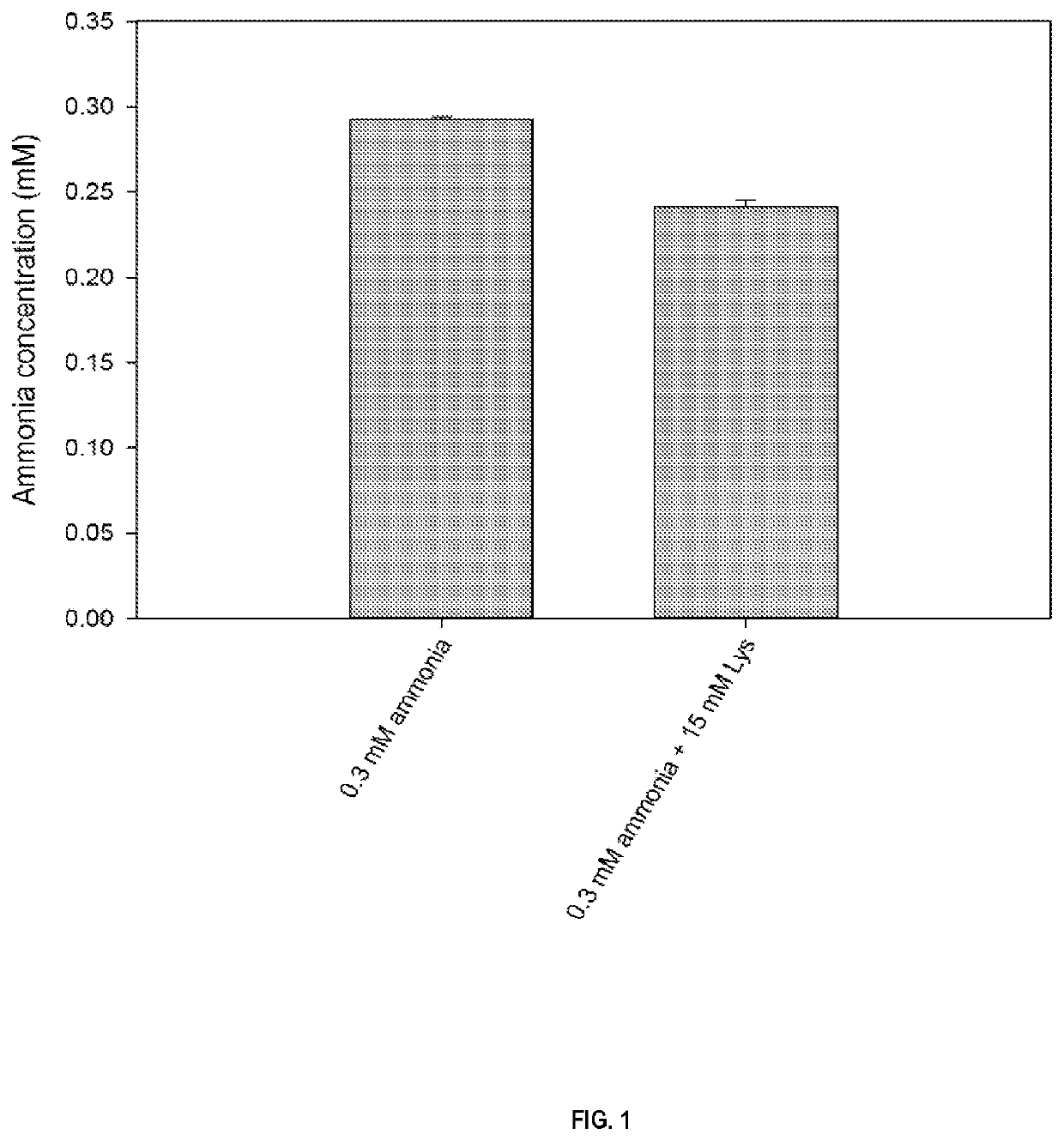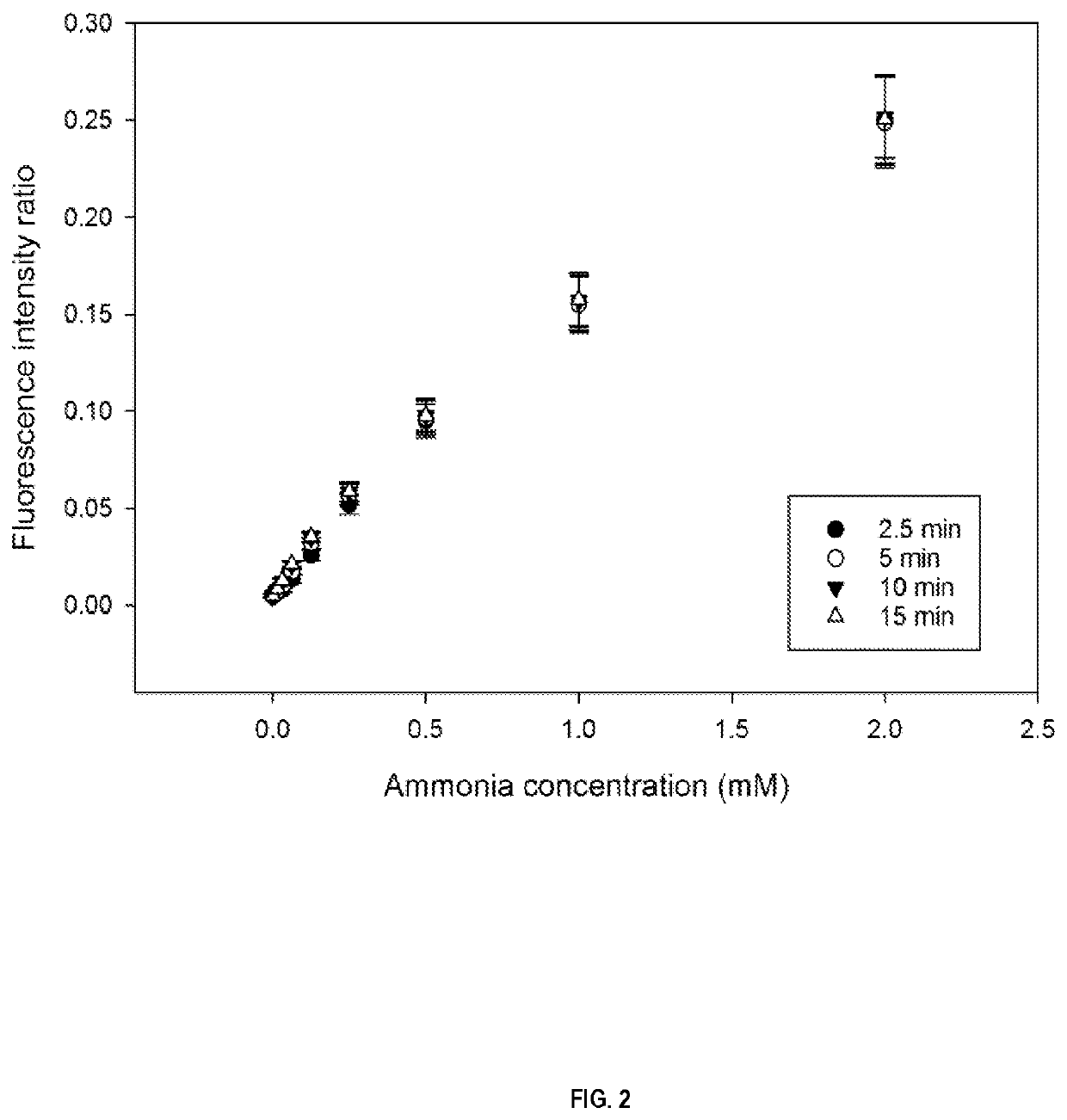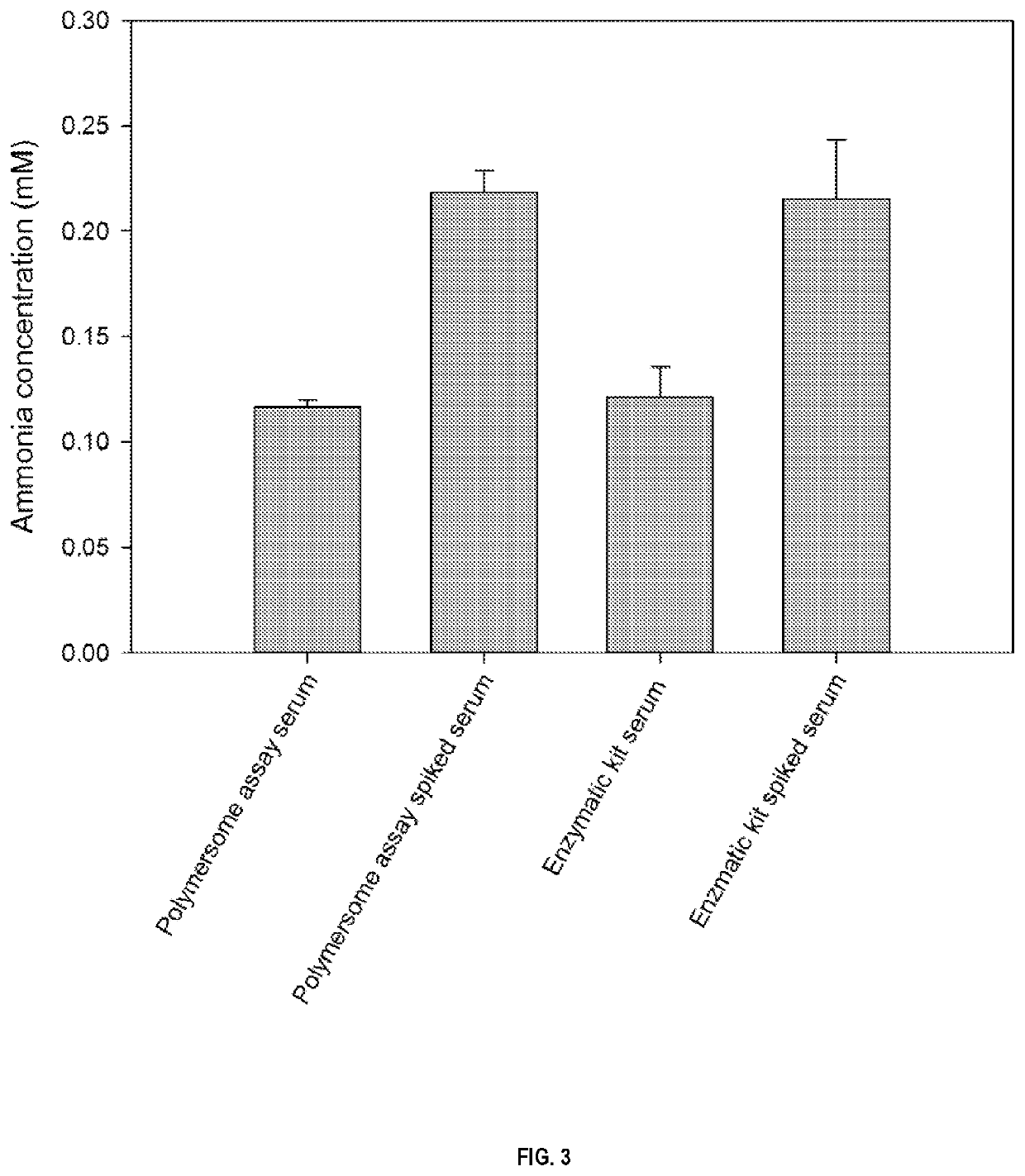Transmembrane ph-gradient polymersomes for the quantification of ammonia in body fluids
a technology of ammonia uptake and polymersomes, applied in the field of ammonia quantification and ammonia in body fluids, can solve the problems of difficult ammonia measurement in many bodily fluids, limited ammonia quantification methods, and use of biological fluids, and achieves fast and independent time-dependent ammonia uptake kinetics, high selectivity to ammonia, and low time dependence
- Summary
- Abstract
- Description
- Claims
- Application Information
AI Technical Summary
Benefits of technology
Problems solved by technology
Method used
Image
Examples
example 1
L-Lysine on Berthelot Reaction-Based Ammonia Quantification
[0182]Experimental Set-Up.
[0183]0.3 mM ammonia without and with 15 mM L-lysine in phosphate-buffered saline (potassium dihydrogen phosphate 1 mM, sodium hydrogen phosphate 3 mM, sodium chloride 155 mM) at pH 7.4 was incubated for 25 minutes at room temperature with the Berthelot reagents (ready-to-use alkaline hypochlorite solution and phenol nitroprusside solution, both obtained from Sigma-Aldrich Chemie GmbH, Buchs, Switzerland). The absorbance of the solution was measured at 636 nm using a spectrophotometer. The presence of L-lysine leads to an underestimation of the ammonia concentration as determined by the Berthelot reaction. Results are shown in FIG. 1 and expressed as mean and standard deviation (n=3).
example 2
nce Intensity Ratio-Based Standard Curve of Pyranine-Containing Transmembrane pH-Gradient Polymersomes at Different Ammonia Concentrations in Phosphate Buffer
[0184]Polymersome Preparation.
[0185]PS-b-PEO polymersomes were produced using an oil-in-water (o / w) emulsion method. More particularly, thirty mg of PS-b-PEO (PS / PEO ratio of approx. 1.4, PS(2770)-b-PEO(2000), Advanced Polymer Materials Inc) were dissolved in 100 μL of an organic solvent (dichloromethane). The polymer organic solvent solution (polymer-containing organic solvent phase, i.e. oil phase) was added dropwise to 1 mL citric acid solution 1 mM at pH 5.5 at an osmolality of 300 mOsmol / kg containing 10 mM pyranine (acidic aqueous phase), under sonication in an ice bath so as to form an emulsion having a 9% (v / v) solvent / aqueous phase ratio. The organic solvent was evaporated using a rotary evaporator for at least 5 minutes at 700 mbar at 40° C. At this stage of the process, there is citric acid and the fluorescent dye in...
example 3
uantification by Pyranine-Containing Transmembrane pH-Gradient PS-b-PEO Polymersomes and a Commercial Enzymatic Ammonia Assay in Human Serum
[0189]Polymersome Preparation.
[0190]Fluorescent transmembrane pH-gradient PS-b-PEO polymersomes were produced and purified as described in Example 2 with a modified citric acid concentration of 5 mM and a modified exterior phase in the column-based purification procedure (phosphate buffer 50 mM at pH 7.4 at 300 mOsmol / kg).
[0191]Ammonia Quantification.
[0192]Pyranine-containing polymersomes (normalized to a pyranine concentration of 0.016 mM) were incubated with commercially available human serum, 0.1 mM ammonia-spiked human serum, and PBS solutions containing different ammonia concentrations (0-0.5 mM) at room temperature. After 10 min, the fluorescence emission intensity at 510 nm excited at 455 nm (pH-dependent excitation wavelength) and the fluorescence emission intensity at 510 nm excited at 413 nm (pH-independent excitation wavelength) were ...
PUM
| Property | Measurement | Unit |
|---|---|---|
| Molar density | aaaaa | aaaaa |
| Amphiphilic | aaaaa | aaaaa |
| Composition | aaaaa | aaaaa |
Abstract
Description
Claims
Application Information
 Login to View More
Login to View More - R&D
- Intellectual Property
- Life Sciences
- Materials
- Tech Scout
- Unparalleled Data Quality
- Higher Quality Content
- 60% Fewer Hallucinations
Browse by: Latest US Patents, China's latest patents, Technical Efficacy Thesaurus, Application Domain, Technology Topic, Popular Technical Reports.
© 2025 PatSnap. All rights reserved.Legal|Privacy policy|Modern Slavery Act Transparency Statement|Sitemap|About US| Contact US: help@patsnap.com



